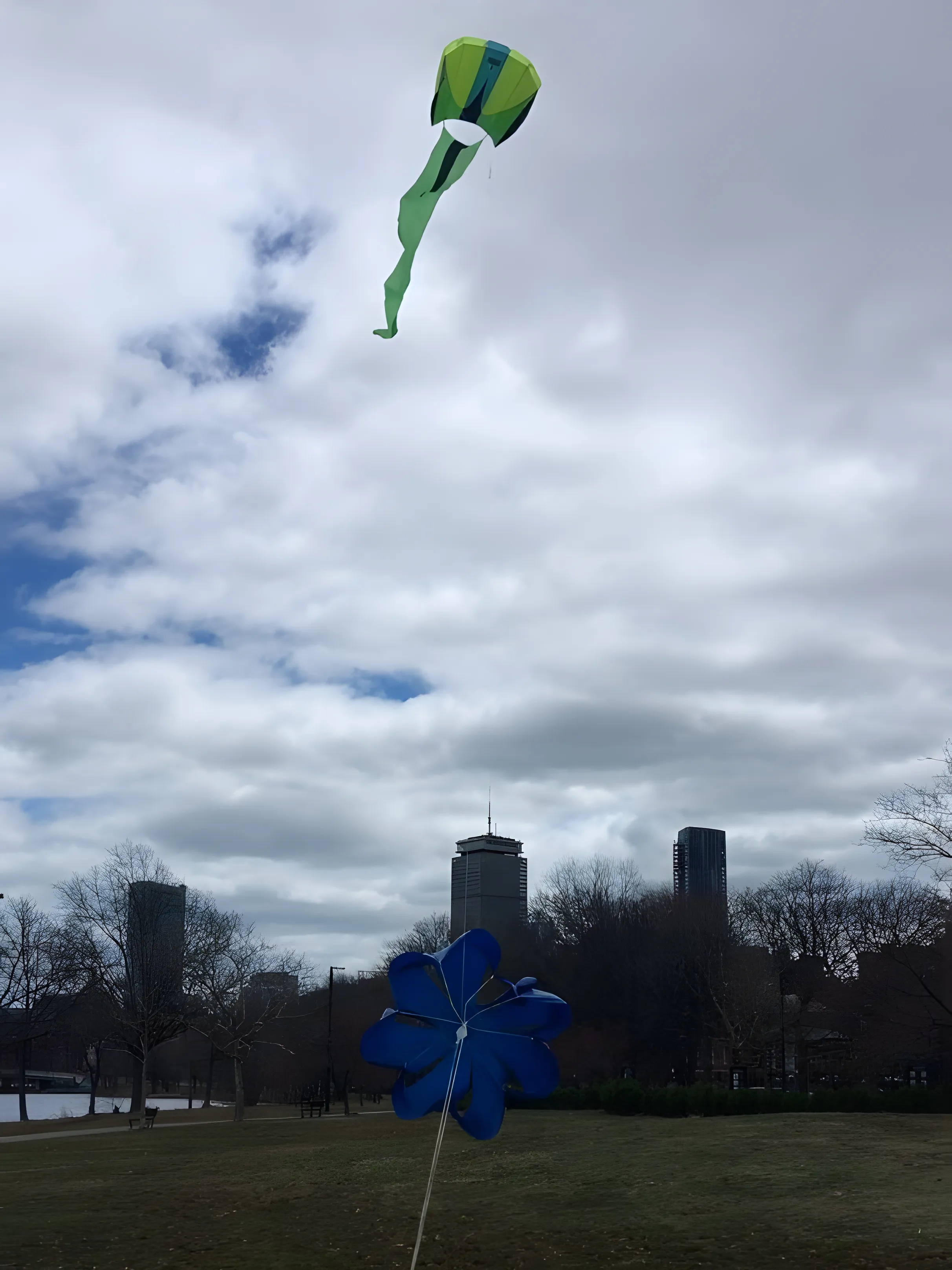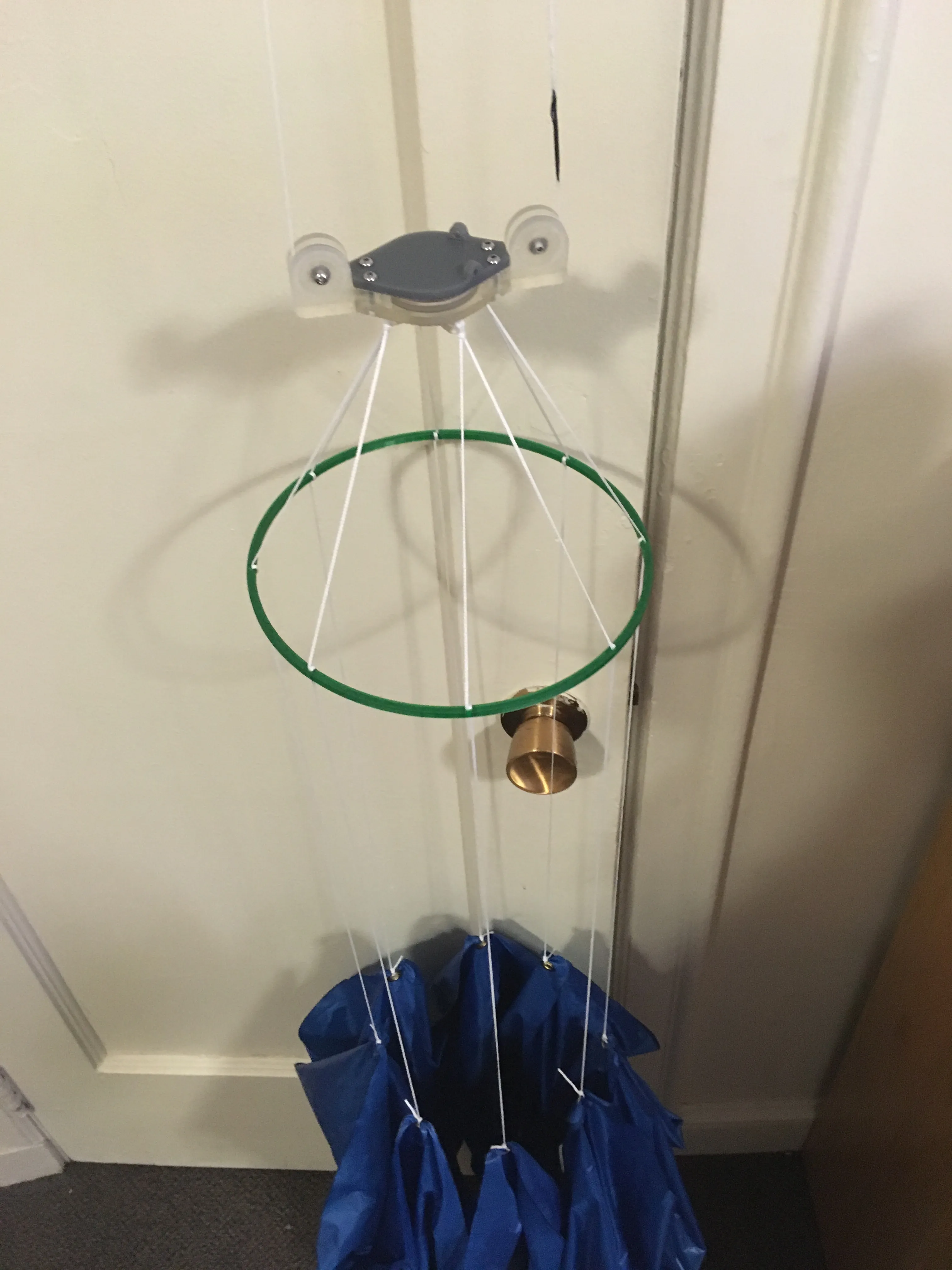Exploring novel renewable and carbon neutral energy sources are pivotal in ensuring we mitigate the adverse effects of global climate change. Conventional wind turbine designs have reached a high degree of refinement and are close to reaching their maximum scaling potential. In this project I proposed, designed, and tested a novel airborne wind turbine design that allows the turbine to tap into the increased wind energy found at high altitudes. Airborne wind energy systems (AWES) transmit energy to the ground mechanically or electrically by means of a tether. In my design, meant for convenient power generation in remote areas, the wind turbine is completely compliant and made from parachute-grade ripstop nylon fabric. The airborne wind turbine is a two-part system, consisting of a lifting kite and a spinning fabric wind turbine. The lifting kite lifts the elevates turbine to a high altitude where it spins and mechanically transmits the energy to the ground through a pulley transmission system. On the ground, the pulley system spins a generator motor which produces electricity. The fully fabric turbine has a parachute-like design with special slits axially symmetric about the center point of the turbine. The drag forces caused by the air flowing through the slits in the turbine cause it to spin and allow it to produce power. The transmission system and ground generator were made of a mix of SLA 3D printed and CNC machined 6061 Aluminum components. This individual project received the Best in Class award in the Boston University 2019 Imagineering Contest. My research on airborne wind energy systems is summarized in the paper attached here.

An outdoor test of the entire airborne wind turbine system. The lifting kite (top) elevates the compliant turbine (bottom) above the ground.

The transmission system converts the rotational motion of the compliant turbine into the revolving motion of a continuous looped tether which mechanically transmits the wind energy to the ground.
An indoor test of the compliant fabric spinning wind turbine design.
A demo of the airborne wind turbine transmission mechanism.